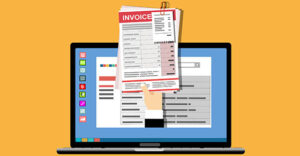Late payments are the bane of many businesses in the construction industry. And in huge and complex construction projects, the process of invoicing and receiving payment is not a simple matter. The hierarchical structure of the payment process and the number of stakeholders make the industry prone to numerous payment issues. Because of this, dealing with negative cash flow is always a possibility for contractors and suppliers so focusing on construction accounts receivable is important.
The many cash flow issues that contractors and suppliers experience stem from poor accounts receivable management. In any type of business, cash flow is king. Losing grip on cash flow, especially in the construction industry, can leave a company struggling to stay afloat. In the end, cash reserves dry up and the business fails.
Accounts receivable management extends beyond on-time invoicing and contacting clients when their payment is due. Business owners also need to be proactive in optimizing the invoicing and collection process, identify trends that may cause payment issues, and set up a system to prevent payment issues from happening. Here are some accounts receivable management strategies that construction companies need to know. Make sure to work through them with an accountant who understands the accounts receivable construction industry needs.
1. Check a client’s credit history before closing the deal.
One of the first things that companies need to practice in their accounts receivable management is examining a potential clients’ credit rating. A client’s credit history is a good indication of their ability to meet their financial obligations and pay you. Any construction company that closes a deal without researching a client’s credit rating is at risk of getting a bad debt.
As a part of your accounts receivable management plan, extend credit only to customers that you are confident will be able to pay you. This also enables you to create realistic credit terms that will make the transaction easier and reduce the risk of an unpaid invoice. Positive construction accounts receivable workflow may also result.
2. Improve your documentation and record-keeping.
The accuracy of invoice information is crucial to smooth payment collection. Any wrong information such as typos in physical or email addresses will lead to invoices being sent to the wrong recipients, causing delays until you find out the cause. Because of this, it is important that construction business owners also focus on improving documentation and record-keeping.
Create a centralized location for your invoice data to ensure that all the information you need is easily accessible. In addition, a regular audit of your customer accounts will ensure that the information you have is accurate and, at the same time, let you know which accounts are due. Finally, an analysis of your current client accounts will let you determine the right credit policy for a better collection rate and identify potential issues before they come up.
3. Automate your accounts receivable collection.
Many construction businesses still rely on spreadsheets in working on accounts receivables, but unfortunately, it is not the most efficient method. Especially when dealing with several projects at the same time, manual entry is prone to mistakes and may even lead to outdated invoice information. This method is also time-consuming for managing your construction accounts receivable system.
Automating your accounts receivable process can solve all of these problems and more. By using dedicated software that connects to your accounting books, for example, you can identify invoices that are at risk of becoming way past due. In addition, automation can help you send invoices, preliminary notices, and other pre-lien documents to aid in the mechanics lien process.
As the construction industry continues to experience payment issues, construction businesses need to prioritize accounts receivable management. By looking at your clients’ credit history, improving your records, and taking advantage of new technologies to improve your collection, you will be able to minimize the risk of negative cash flow. All of this works together to improve your construction accounts receivable and enable you to focus on your core business better.
About the Author:
Patrick Hogan is the CEO of Handle.com, where they build software that helps contractors, subcontractors, and material suppliers with late payments. Handle.com also provides funding for construction businesses in the form of invoice factoring, material supply trade credit, and mechanics lien purchasing.
This article focuses on the accounts receivable construction industry and known issues.
© 2019




